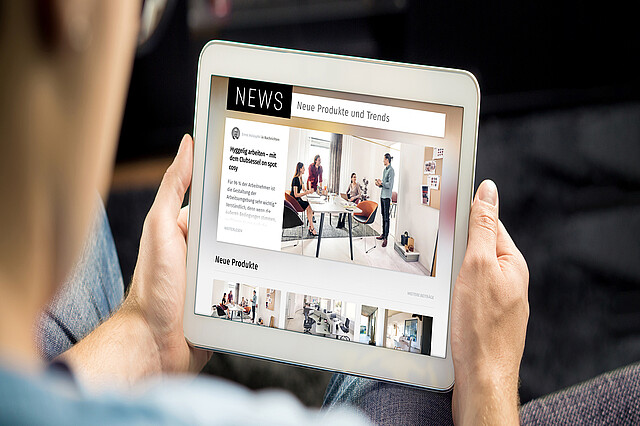Office design with a scientific foundation

Traditional workplace research often relies on subjective surveys, which may not always provide a complete picture. In contrast, neurophysiological measurements offer more objective data by analysing factors such as heart rate, respiration, and cortisol levels. "Neurophysiology and environmental psychology can significantly enhance our understanding of how workplaces affect us," emphasises Sophie Schuller. These data-driven insights help optimise spaces to minimise health risks.
Encouraging social interaction

Humans have a fundamental need for social interaction. Face-to-face encounters stimulate the release of oxytocin, which fosters trust and bonding, as well as endorphins, which enhance well-being. "Social interactions trigger the release of oxytocin, promoting trust and connection, along with endorphins, which boost mood and overall well-being," explains Schuller. Virtual collaboration, however, reduces the activity of mirror neurons, which are crucial for social learning. Offices should therefore be designed to facilitate encounters and spontaneous exchanges—whether through open communal areas, creative meeting spaces, or hybrid work models that still encourage regular in-person meetings.
Designing for creativity and well-being
Minimalist, sterile offices can have a negative impact on well-being. Instead, incorporating natural materials, soft lighting, and inspiring artwork can enhance the office environment. "Many office spaces are characterised by strict minimalism or a clinical atmosphere," warns Schuller. Biophilic design—the integration of plants and natural elements—has been proven to positively affect cognitive performance. Plants, for example, provide a calming visual stimulus through their fractal patterns, increase alpha waves in the brain, and promote creative thinking.
Incorporating Sensory Diversity

Beyond visual elements, factors such as acoustics, air quality, and lighting play a crucial role. "Natural light and pleasant acoustics can make a significant difference," says Schuller. Maximising natural light supports the circadian rhythm, while acoustically separated quiet zones enable focused work. Meanwhile, open, collaborative spaces foster communication. Temperature and tactile elements, such as varied textures, also contribute to general overall comfort.
Promoting Movement
The human body is not designed for prolonged sitting. Offices should therefore encourage movement as an integral part of the workday. "The best posture is one that keeps changing," explains Schuller. Ergonomic furniture, dynamic workspaces, and varied seating options—from stools to standing desks—help support natural postures. Businesses can also create incentives for movement, such as standing meetings or creative work areas that encourage position changes.
Creating spaces for human needs

Inviting offices take fundamental human needs into account, including rest, relaxation, and personal preferences. In addition to workspaces, relaxation areas should be incorporated to allow for unwinding. Quiet rooms, comfortable lounge areas, or even small libraries can enhance well-being.
A modern, inviting office is more than just a workplace—it is an environment that fosters creativity, social interaction, and well-being. "Office environments are often designed for efficiency through uniformity, but people are dynamic," Schuller summarises. By adopting a scientifically grounded approach that integrates social, sensory, and movement-friendly aspects, offices can become truly inspiring spaces. Ultimately, it is about placing people at the centre of design and creating spaces that support motivation, productivity, and health in equal measure.
social media channels:


